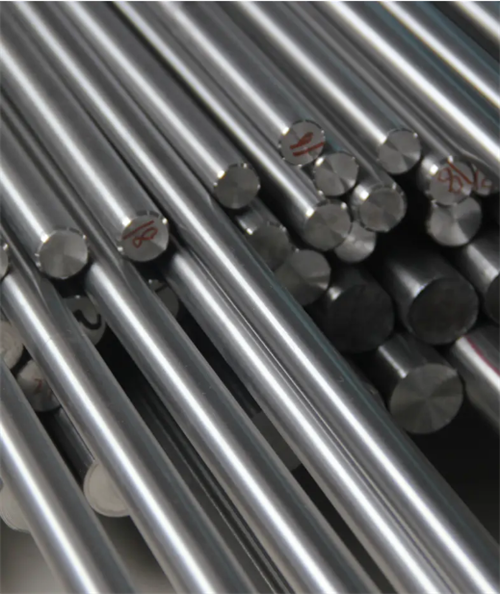Niobium Bar
1. Grade:R04200-Type 1, R04210-Type 2, R04251-Type 3, R04261-Type 4
2. Type: Bar, Rod, Wire
3. Bar Dia.: 152.4 - 600mm x 4.75-10mm
4. Rod Dia.: 3.18-63.5mm
5. Wire Dia.: 0.51-3.15mm
Brand: RO4200-1, RO4210-2
Specifications: Φ3.0~Φ100mm
Implementation standard: ASTM B 392-98
Product application
Rods and wires are widely used in chemical, electronic, aviation, and aerospace fields.
Niobium and niobium alloy rods are used as structural materials for aero-engines and rocket nozzles, as reactor internal components and cladding materials, and to make various corrosion-resistant parts in nitric, hydrochloric, or sulfuric acid corrosive conditions.
The addition of zirconium to niobium significantly improves the oxidation resistance and strength of the material.
Niobium and niobium-zirconium alloy wire is widely used in the manufacture of high-pressure sodium lamps and electrolytic capacitor anode lead. (Execution standard: ASTMB392-95).
The main strengthening routes for niobium are solid solution, precipitation, and deformation heat treatment. In niobium alloys, the inclusion of the alloying elements tungsten and molybdenum can significantly improve their high and low-temperature strength, but too much will reduce the alloy process performance. Tantalum is a moderately strengthening element and lowers the plastic-brittle transition temperature of the alloy. Another way to strengthen niobium alloys is to add titanium, zirconium, and hafnium, as well as a certain percentage of carbon to form a diffuse carbide phase for precipitation strengthening.
In addition, these active elements can improve other properties, such as titanium can significantly improve the oxidation resistance and process performance of the alloy; hafnium and zirconium can improve the resistance of the alloy to corrosion of molten alkali metals; hafnium can significantly improve the oxidation resistance and welding performance of the alloy. High-strength niobium alloys generally contain a large number of solid solution elements (tungsten, molybdenum, tantalum, etc.) for solid solution strengthening, and precipitation strengthening is also used to give the alloys high strength (see Strengthening of metals). These alloys are more difficult to process plastically and require strict control of the deformation process parameters. Medium-strength alloys in addition to Nb-10W-1Zr-0.1C alloys containing carbide precipitation strengthening phase, other varieties are added to the medium content of solid solution strengthening elements to ensure that has an excellent overall performance. Low-strength alloys as long as the addition of appropriate amounts of titanium, zirconium, and hafnium, you can ensure that the alloy has excellent processing performance.












